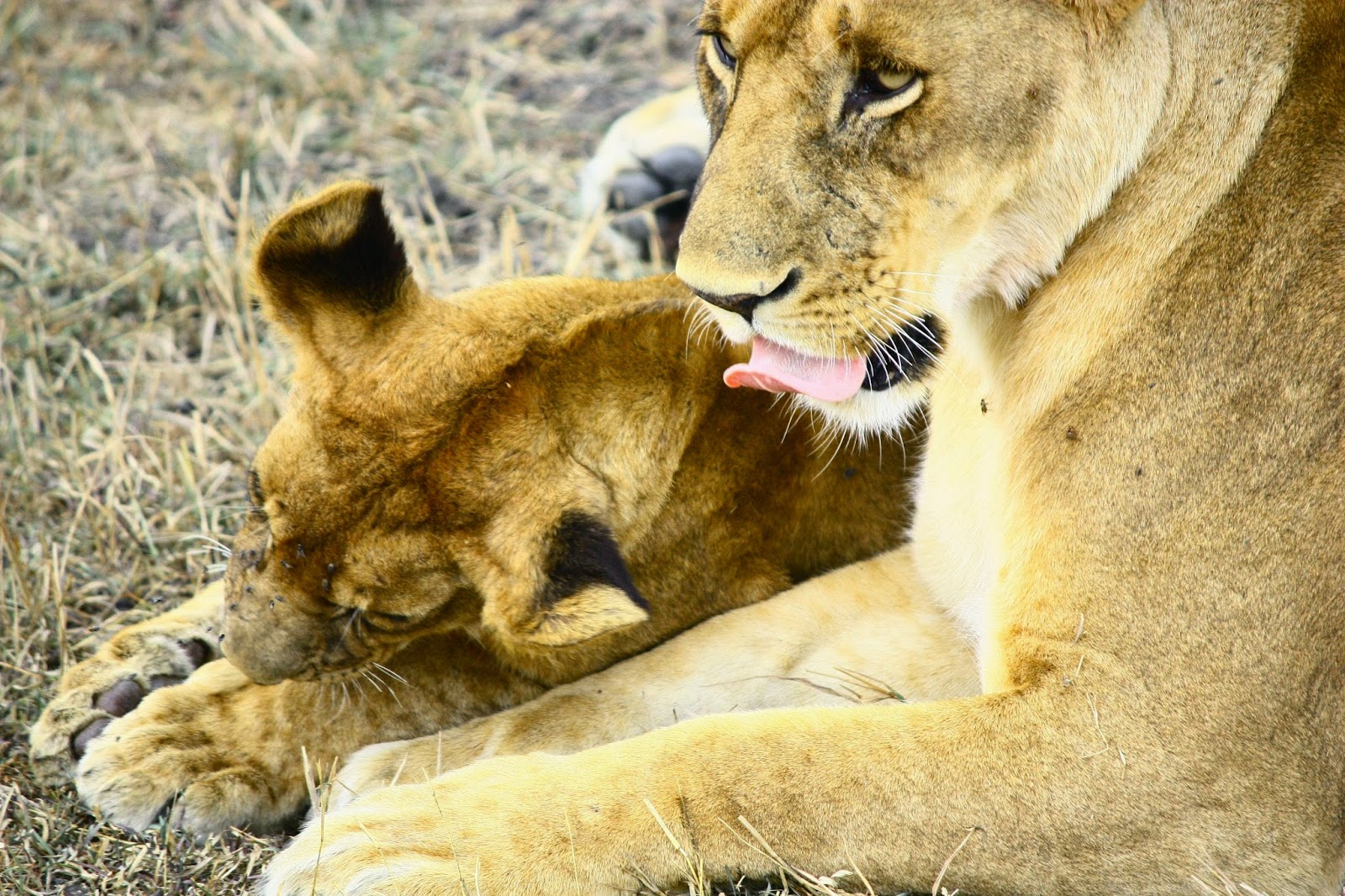We spent the final four days of our big trip hiking up Mount Meru, a 4,566-meter (14,980 feet) volcano in Tanzania about 70 kilometers from Mount Kilimanjaro.
The climb started at about 1,500 meters above sea level, and was spaced so that you climbed about 1,000 meters (3,200 feet) each day on a three-day ascent. The first day was a beautiful walk through the rain forests of Arusha National Park up to the first "hut," Mirakamba. We didn't see the forest elephants or water buffalo advertised in our guide book (although saw plenty of buffalo tracks), but were treated to multiple sightings of Colobus monkeys.
We were really impressed with the facilities at the huts. We had actually brought our tent along, thinking we'd have to pitch it each night, but it turned out they had big bunkhouses for hikers complete with a mattress and running water. Our big mistake in preparedness (which was fairly unavoidable) was bringing the wrong gas for our camp stove - we had to buy it in Arusha, and there was only one kind. We thought it would fit, and it didn't. Disaster!! Luckily, Jim is friendly and the guides leading other hikers were generous (everyone else on the mountain had gone with a guide, porter and cook - usually three support staff per hiker - while we just hired a porter, Christopher, at the gate to help us carry our two bags). So we were able to buy a bit of time on the big propane camp stoves they carry up the mountain, and cook our noodles and tuna. One extremely generous man and his two sons invited us to eat with them the night before and the lunch just after the summit - so we ended up carrying food off the mountain!
On day two, we woke up to clear skies and enjoyed a beautiful, straightforward walk up to Saddle Hut. We rested in the sun for a few hours, eating ramen noodles and chatting with our fellow hikers, and then set off for the short walk up to Little Meru, a peak recommended to help you acclimate to the altitude before summiting the next morning.
It was early to bed - we climbed in our sleeping bags around 7:30pm - and early to rise. We woke up at about 2am, put on our gear, grabbed our waters and snacks, and set off in to the dark with Christopher leading the way. A dark, cold, windy, but stunningly beautiful 4.5 hour walk under the stars later, we were at the summit!
 |
| The bush-whacking required to get to the top was pretty intense. Once, we had to chop through an entire tree to continue up the path. |
 |
| Cool mossy trees. Turns out all of those bushes in the foreground are stinging nettles. whoops! We also saw a group of Colobus monkeys in these trees - beautiful black and white monkeys with long white shaggy tails. |
 |
| Still below the clouds, on our way to Mirakamba Hut. |
 |
| Here we are, the next morning, at Mirakamba Hut, during a brief break in cloud cover as the sun rose. The peak of Meru is directly behind me. That's where we're headed! |
 |
| Mist formed within seconds, and about a minute after we took the last picture, we were back in cloud. |
 |
| Continuing on our hike up to Saddle Hut, the second stop, we got some beautiful views of the side of the mountain. |


 |
| Made it to Saddle Hut! 11,400 feet. |


































